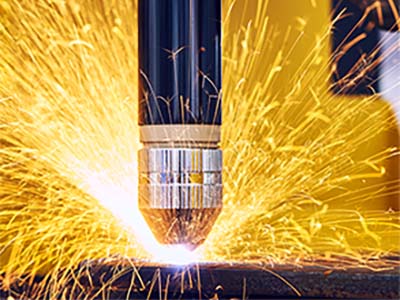Productivity Matters

Taking Productivity a Cut Above
Choosing the Right Cutting Process for Stainless Steel
Manufacturers have been machining stainless steel since the early 1900s. Since that time, one of the most expensive materials to process has proven itself to be vitally important to certain manufacturing sectors, such as the energy and food processing markets. Today manufacturers are looking for faster and less expensive ways to increase productivity on stainless. They’re asking for processing or cutting solutions that can increase speeds, achieve better product quality and reduce the overall time to make a part. A common problem is that fabricators use technology not specifically designed for cutting stainless steel. For companies expanding into cutting stainless steel, several factors must be taken into consideration in order to ensure they have the right machine for their requirements.
Before choosing a cutting machine, first ask yourself the following questions: 
- What is the composition of the stainless steel you are using?(i.e., Austenitic stainless steel, Martensitic stainless teel, Duplex stainless steel)
- What thickness ranges of stainless are you intending to process?How many profiles need to be cut?Are the profiles interior or exterior cuts?
- Are the profiles sharp edged or sweeping or radius/rounded shapes?
- What are the part tolerances, and is there a difference between the interior and exterior tolerances?
- Is the heat-affected zone of the processed part a factor?
- How big are the parts you are going to ultimately produce?
Technologies for Cutting Stainless Steel
Manufacturers have a choice of several cutting technologies for cutting stainless steel, each having its advantages based upon the tolerance requirement needed for the finished part. The current technologies available include:
Laser Cutting
Laser cutting is a thermal cutting process that uses localized melting or vaporizing to sever metal with the heat from a beam of coherent light, typically with the assistance of a high-pressure gas. Among today’s current technologies, laser cutting tolerances are the most accurate, with a tolerance ranges of +/- .005 - .015. Laser processing typically has a higher cost of entry into the market from a capital equipment cost perspective.
Plasma Arc Cutting
Oxy-Fuel Cutting
With oxy-fuel cutting, an oxygen/fuel gas flame preheats the steel after which a high-power oxygen jet is directed at the melted metal, creating a chemical reaction between the oxygen and the metal to form iron oxide. This process is not recommended for cutting stainless steel due to the poor quality of cut. Oxy-fuel tolerances generally fall into a range of +/- .020 - .060 (mild steel) and are very operator dependent. Oxy-fuel cutting is a process that has been around for 100 years; however, few good stainless steel “burners” or oxy-fuel operators remain today. Tolerance is defined as the combination of the machine’s mechanical accuracy and the process accuracy of the beam, arc or flame.
The ProStar™ PRS 300 Machine – The Hybrid That’s a Cut Above
Praxair answers the challenges of cutting stainless steel with the PRS 300 HD machine. Designed specifically for stainless steel, this hybrid plasma to laser machine provides mechanical accuracy in the cut that is designed to mirror the mechanical accuracies achieved with a laser, ultimately producing a part with processed tolerances that will often be within the range of the laser processed tolerances mentioned above. This hybrid machine is part of the ProStar line of CNC cutting machines that span the range from the PRS SK4 plate cutting machine for small metfab operations to the PRS 900 robotic plasma beam cutting system, one of the most advanced structural steel fabricating machines on the market. Praxair ProStar CNC cutting machines specialize in 2-D plate cutting, pipe cutting, circular cutting, 3-D/beam cutting, dome cutting, drilling and contour beveling.
Reduce costs and elevate productivity
In summary, when cutting stainless steel, there are many variables to consider. Closely evaluate your range of materials and sizes. And be sure you match up the machine’s capabilities to your process requirements before making the decision to move forward with the project. Praxair’s breakthrough metal-cutting technology can help you lower equipment investment, cut labor expenses and minimize operating costs all while improving product quality and productivity. Whatever your cutting challenge, we’ll work with you to understand your cutting needs and help you choose the most effective and economical cutting process for your operations.




























